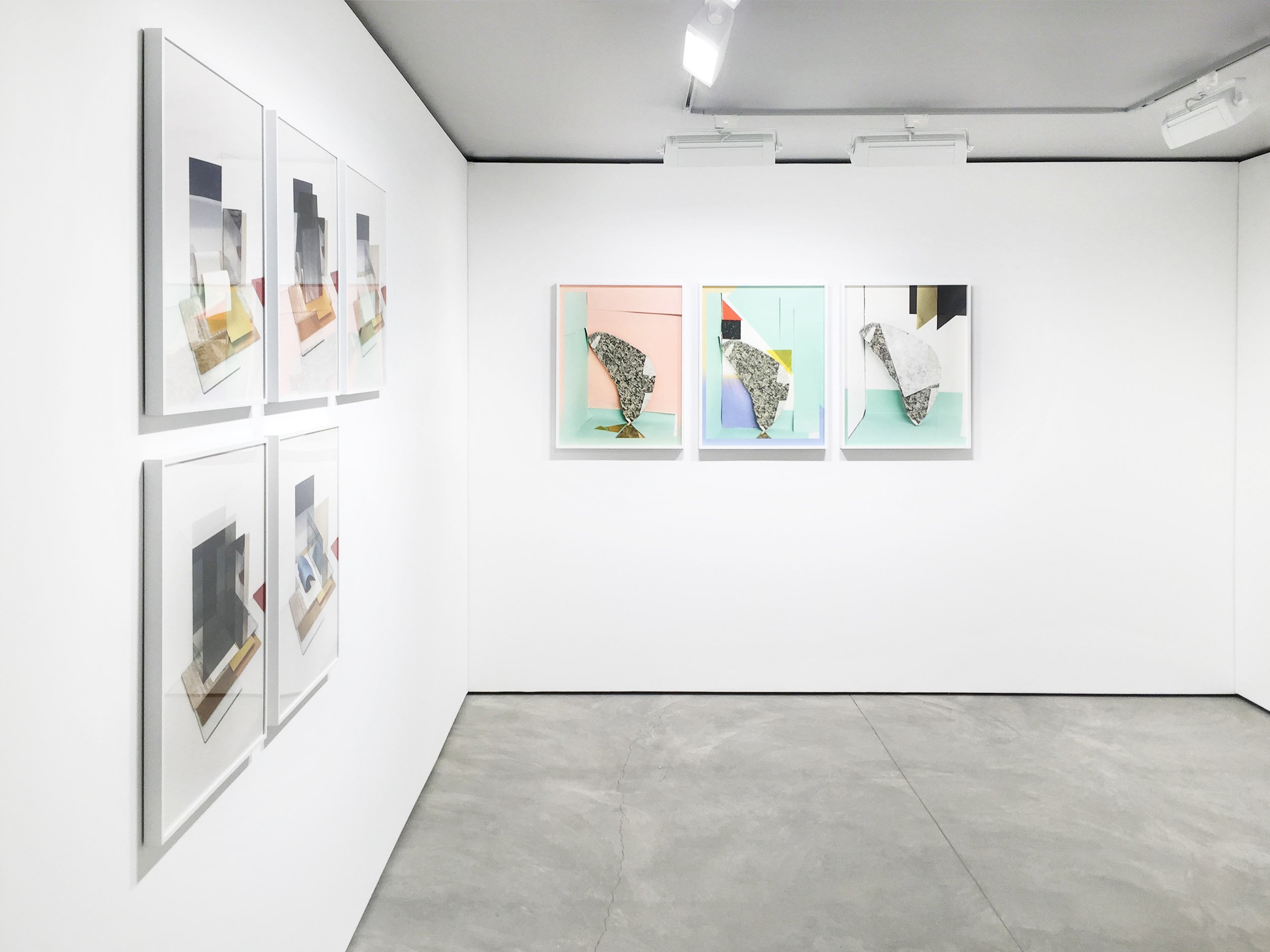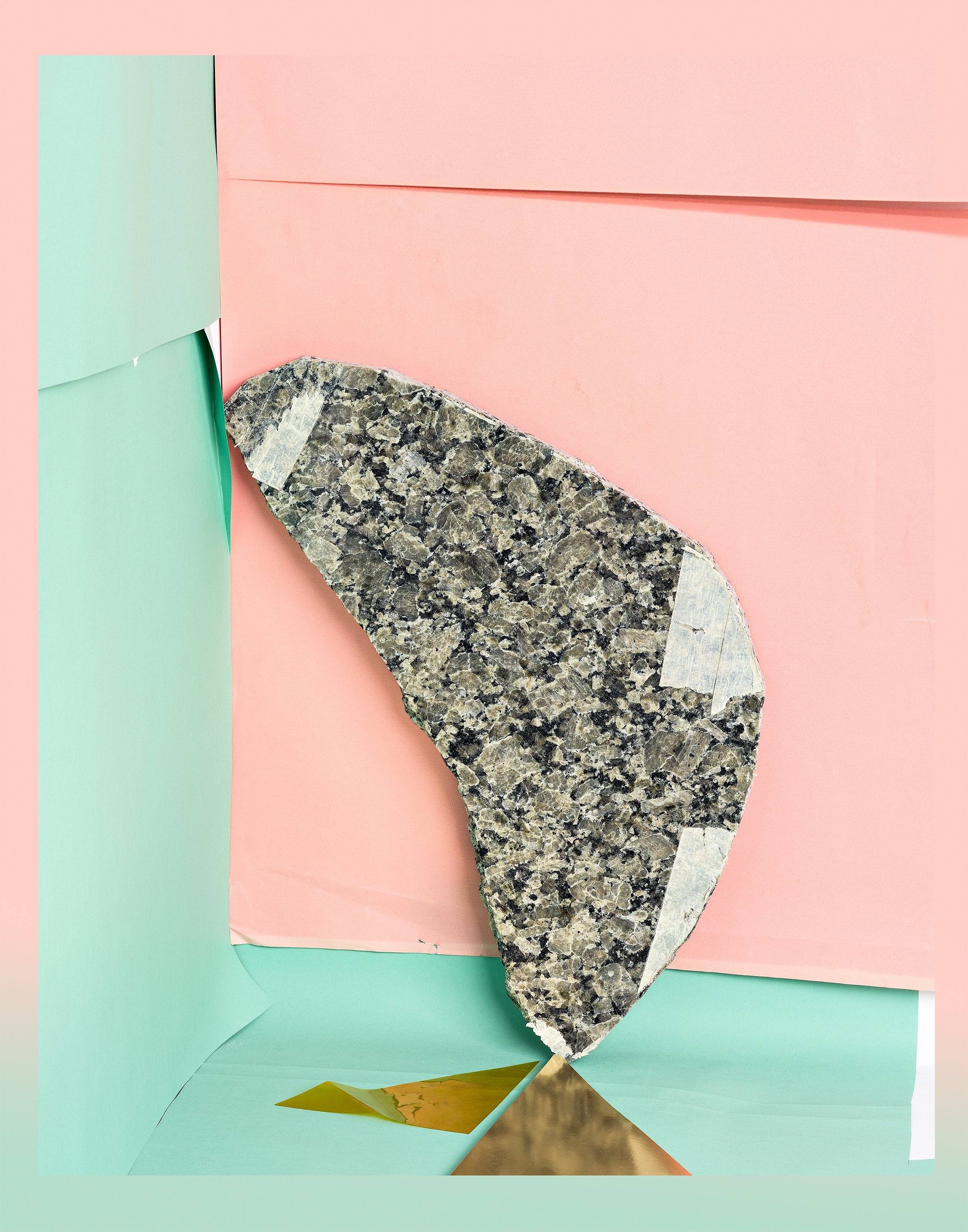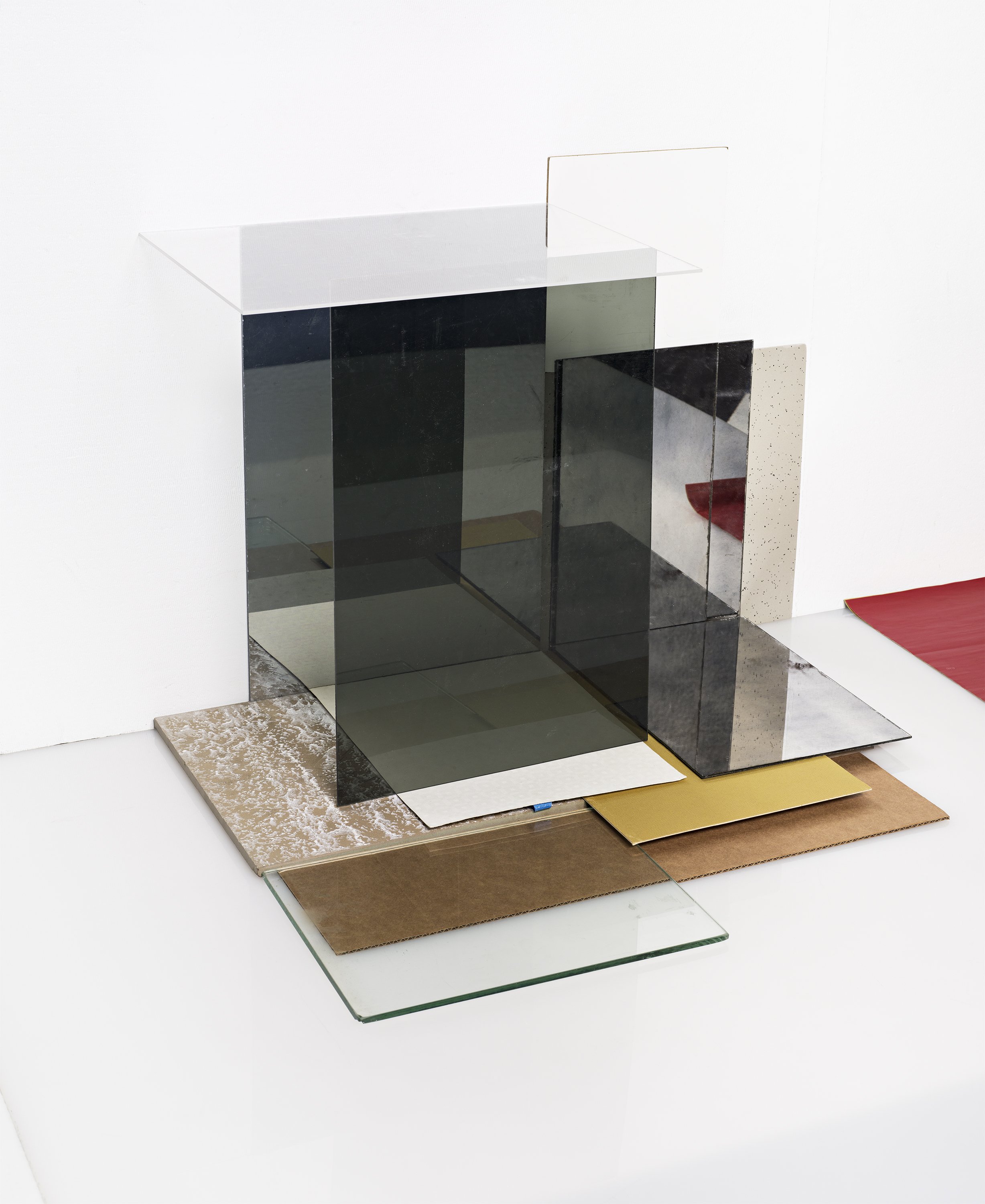Phillip Maisel: Habitat
Shulamit Nazarian
Los Angeles, CA
September 14 - November 11, 2016
Press Release:
Shulamit Nazarian is pleased to present Habitat, an exhibition of recent works by San Francisco-based artist Phillip Maisel. Habitat marks the artist’s first solo exhibition in Los Angeles.
While rooted in the language of photography, Maisel’s practice traverses sculpture, collage, and installation. Never fully resigning itself to a single medium, each piece meditates upon perception, while drawing on the framework of architecture and design.
Maisel selects objects—building materials, studio supplies, and personal artifacts that are embedded with distinct histories of use—and meticulously arranges them into a temporary still life. In the controlled environment of the studio, Maisel photographs the tableau and makes subtle adjustments between each frame by repositioning, introducing, or extracting elements; he captures each intervention sequentially before finally dismantling the structures. The use of a digital camera provides the artist with an immediate view of the two-dimensional representation, and it is the flattened image, not the objects themselves, that then inform subsequent photographs. Presenting the works in grids and small groupings reveals the nuanced variations within each image.
In many of the artist’s new works, a doubling of object and image occurs when Maisel collages the documented materials to the surface of the photographic print. The gesture complicates the relationship between representation and reality, asking the viewer to consider if image and material are distinguishable. At times, the methodology is extended through a physical intervention of surface, as Maisel cuts, bends, and folds the photographic paper.
The exhibition takes its title from Habitat 67, an experimental residential structure designed by architect Moshe Safdie. Safdie’s method of design, both modular and repetitive, correlates with Maisel’s working process and iterative compositions. The term also evokes the domesticity of Safdie’s architectural space, and that of materials used in the construction of the Maisel’s assemblage-images. The root of the word “habitat” means to possess, or to be situated, echoing the viewer’s process of negotiating the relationship between the pictorial space and the physicality of the artwork’s surface.
Installation images
Individual works
Jeanne and Claude (4008) Cut archival pigment print 28" x 22" / 71.1 x 55.9 cm 2016
Jeanne and Claude (3983) Cut archival pigment print 28" x 22" / 71.1 x 55.9 cm 2016
Jeanne and Claude (3943) Cut archival pigment print and neutral density filter 28" x 22" / 71.1 x 55.9 cm 2016
Feldspar (1095) Archival pigment print and neutral density filter 26" x 17.8" / 66 x 45.2 cm 2015
Feldspar (1098) Archival pigment print 26" x 17.8" / 66 x 45.2 cm 2015
Desert Hot Springs (4846) Archival pigment print and colored filters 30" x 20" / 76.2 x 50.8 cm 2016
Desert Hot Springs (4699-4) Archival pigment print, metal chain, and neutral density filter 30" x 20" / 76.2 x 50.8 cm 2016
Desert Hot Springs (4699-1) Archival pigment print and neutral density filter 30" x 20" / 76.2 x 50.8 cm 2016
Desert Hot Springs (4699-2) Archival pigment print and metal chain 30" x 20" / 76.2 x 50.8 cm 2016
Stack V (6636) Archival Pigment Print 21.7 x 17.7" / 55 x 45 cm 2014
Stack V (6649) Archival Pigment Print 21.7 x 17.7" / 55 x 45 cm 2014
Stack V (6640) Archival Pigment Print 21.7 x 17.7" / 55 x 45 cm 2014
Stack V (6646) Archival Pigment Print 21.7 x 17.7" / 55 x 45 cm 2014
Stack V (6650) Archival Pigment Print 21.7 x 17.7" / 55 x 45 cm 2014




















